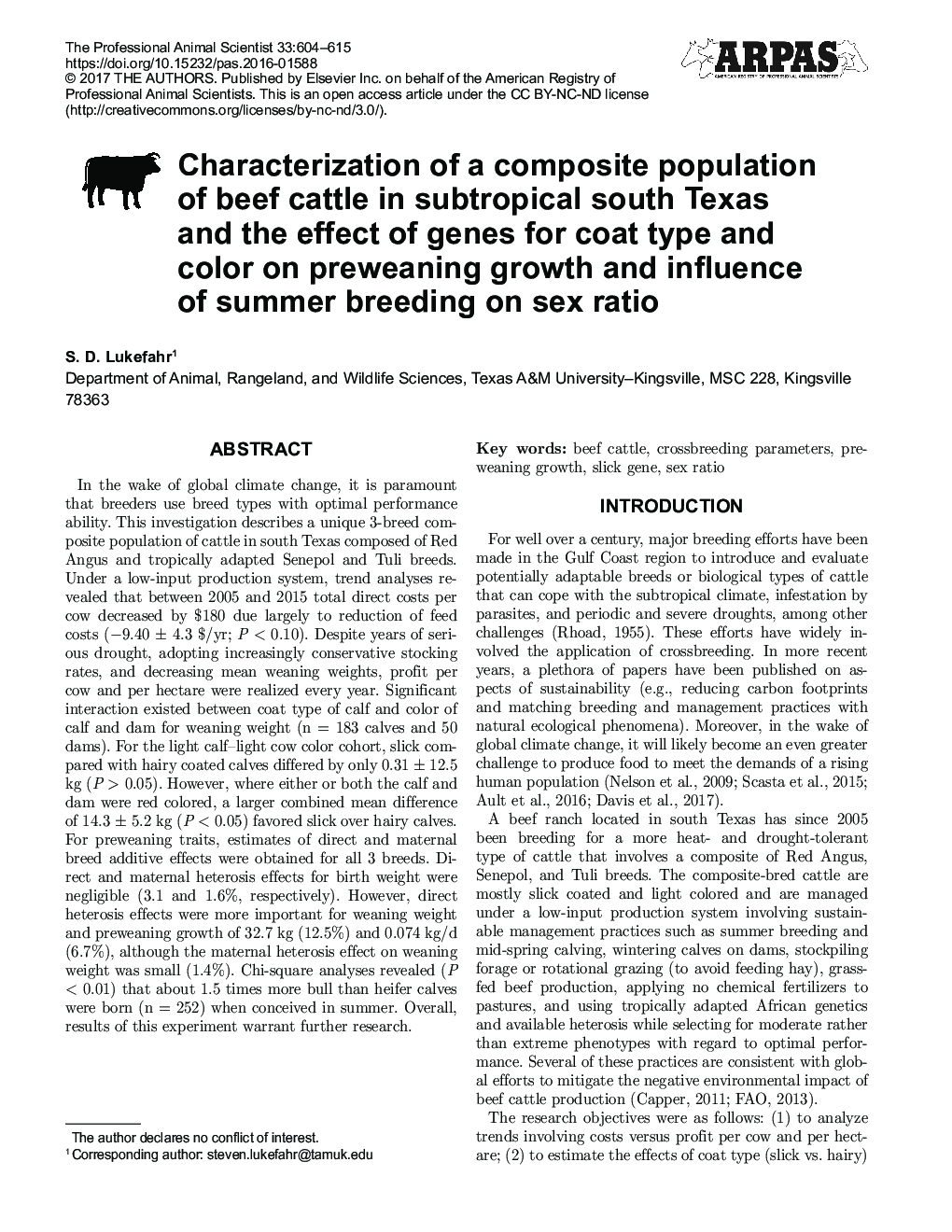| کد مقاله | کد نشریه | سال انتشار | مقاله انگلیسی | نسخه تمام متن |
|---|---|---|---|---|
| 8503731 | 1554280 | 2017 | 12 صفحه PDF | دانلود رایگان |
عنوان انگلیسی مقاله ISI
Characterization of a composite population of beef cattle in subtropical south Texas and the effect of genes for coat type and color on preweaning growth and influence of summer breeding on sex ratio
ترجمه فارسی عنوان
تشخیص یک جمعیت کامپوزیتی گاو گوشتی در جنوب تگزاس جنوب غربی و اثر ژن ها برای نوع و رنگ کت و شلوار بر رشد پیش پیشین و تاثیر تابستانه تابستان بر نسبت جنسیت
دانلود مقاله + سفارش ترجمه
دانلود مقاله ISI انگلیسی
رایگان برای ایرانیان
کلمات کلیدی
گاو گوشت گاو، پارامترهای متقابل پیش بینی رشد، ژن خفیف نسبت جنسی،
موضوعات مرتبط
علوم زیستی و بیوفناوری
علوم کشاورزی و بیولوژیک
علوم دامی و جانورشناسی
چکیده انگلیسی
In the wake of global climate change, it is paramount that breeders use breed types with optimal performance ability. This investigation describes a unique 3-breed composite population of cattle in south Texas composed of Red Angus and tropically adapted Senepol and Tuli breeds. Under a low-input production system, trend analyses revealed that between 2005 and 2015 total direct costs per cow decreased by $180 due largely to reduction of feed costs (â9.40 ± 4.3 $/yr; P < 0.10). Despite years of serious drought, adopting increasingly conservative stocking rates, and decreasing mean weaning weights, profit per cow and per hectare were realized every year. Significant interaction existed between coat type of calf and color of calf and dam for weaning weight (n = 183 calves and 50 dams). For the light calf-light cow color cohort, slick compared with hairy coated calves differed by only 0.31 ± 12.5 kg (P > 0.05). However, where either or both the calf and dam were red colored, a larger combined mean difference of 14.3 ± 5.2 kg (P < 0.05) favored slick over hairy calves. For preweaning traits, estimates of direct and maternal breed additive effects were obtained for all 3 breeds. Direct and maternal heterosis effects for birth weight were negligible (3.1 and 1.6%, respectively). However, direct heterosis effects were more important for weaning weight and preweaning growth of 32.7 kg (12.5%) and 0.074 kg/d (6.7%), although the maternal heterosis effect on weaning weight was small (1.4%). Chi-square analyses revealed (P < 0.01) that about 1.5 times more bull than heifer calves were born (n = 252) when conceived in summer. Overall, results of this experiment warrant further research.
ناشر
Database: Elsevier - ScienceDirect (ساینس دایرکت)
Journal: The Professional Animal Scientist - Volume 33, Issue 5, October 2017, Pages 604-615
Journal: The Professional Animal Scientist - Volume 33, Issue 5, October 2017, Pages 604-615
نویسندگان
S.D. Lukefahr,
